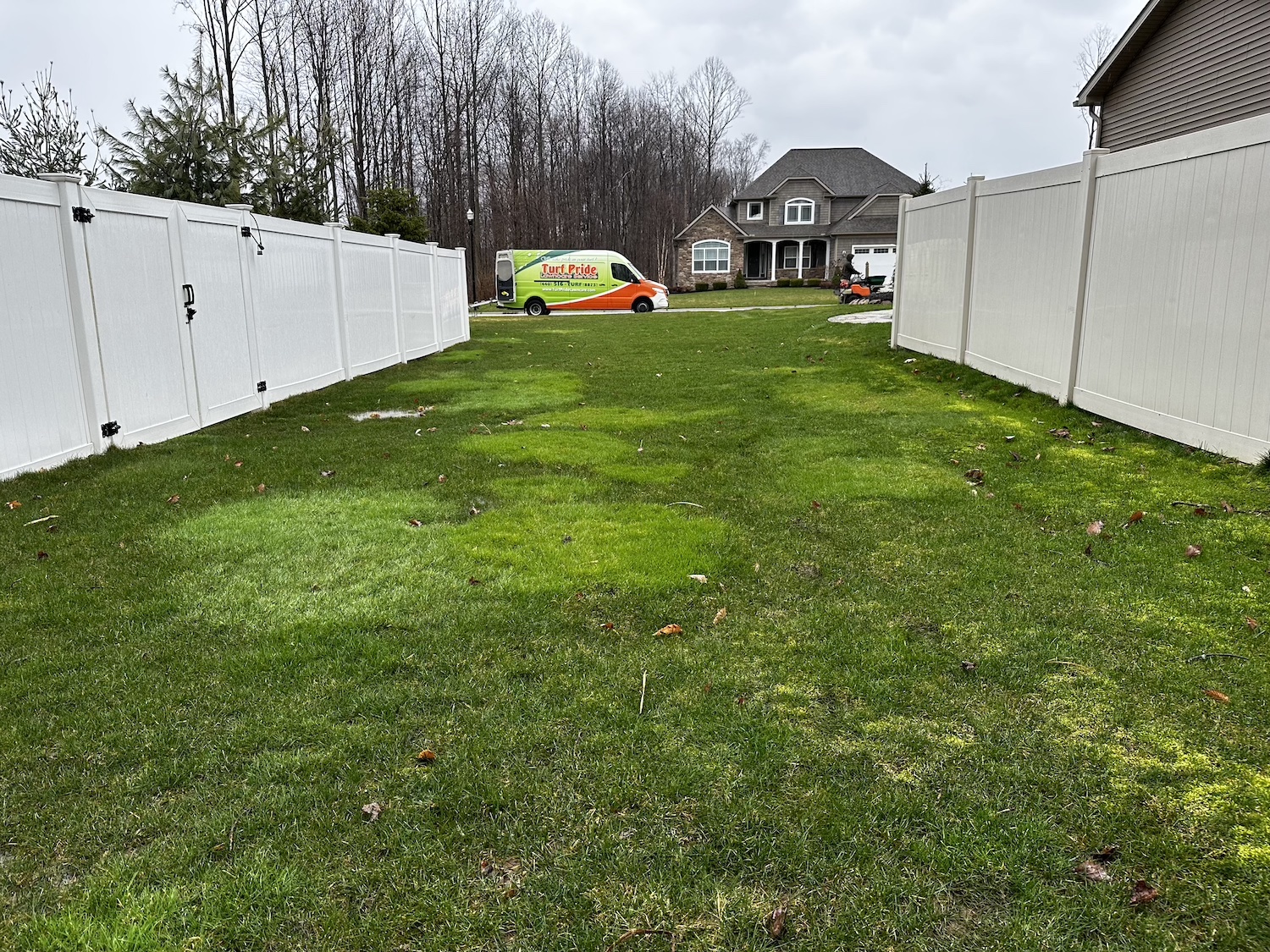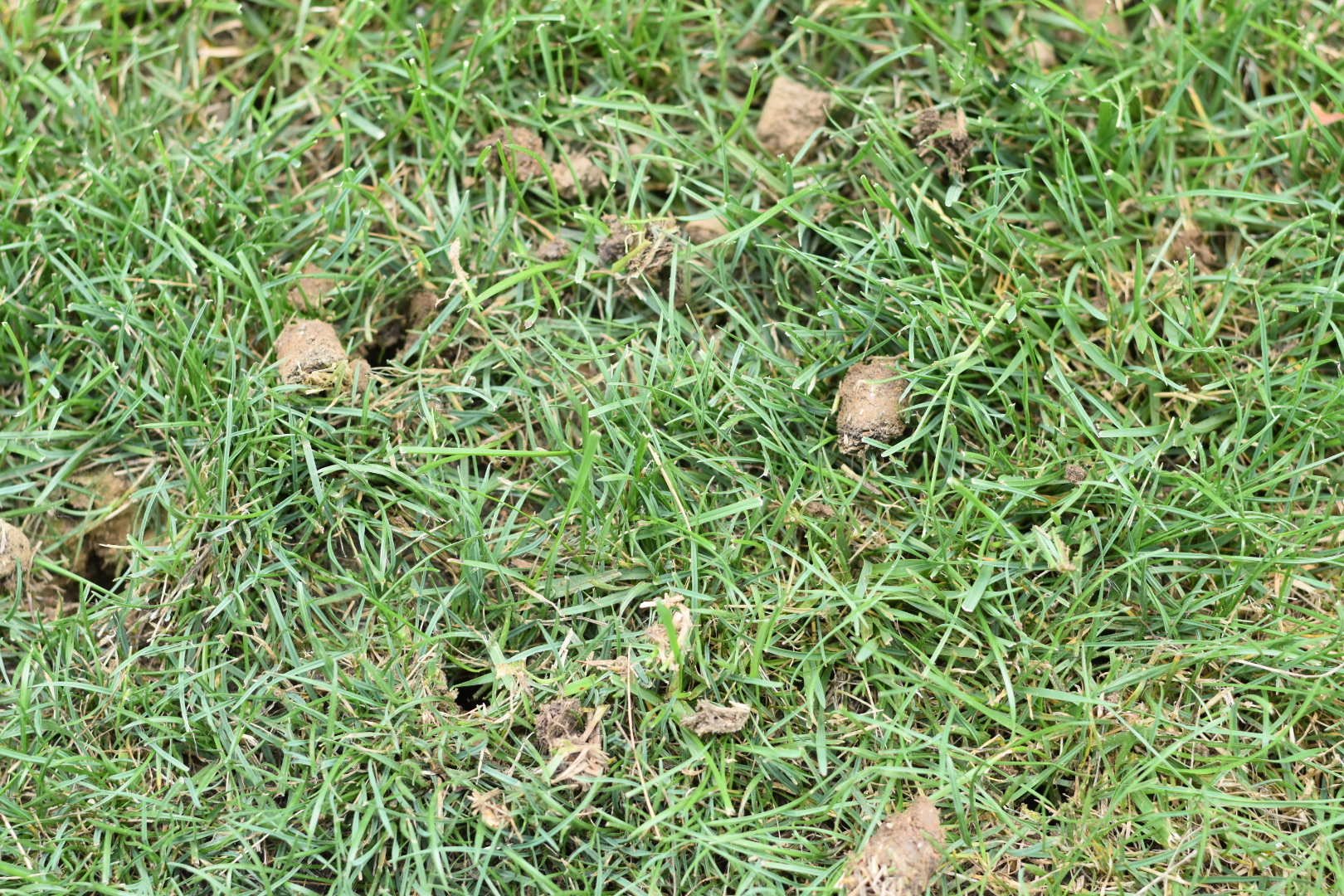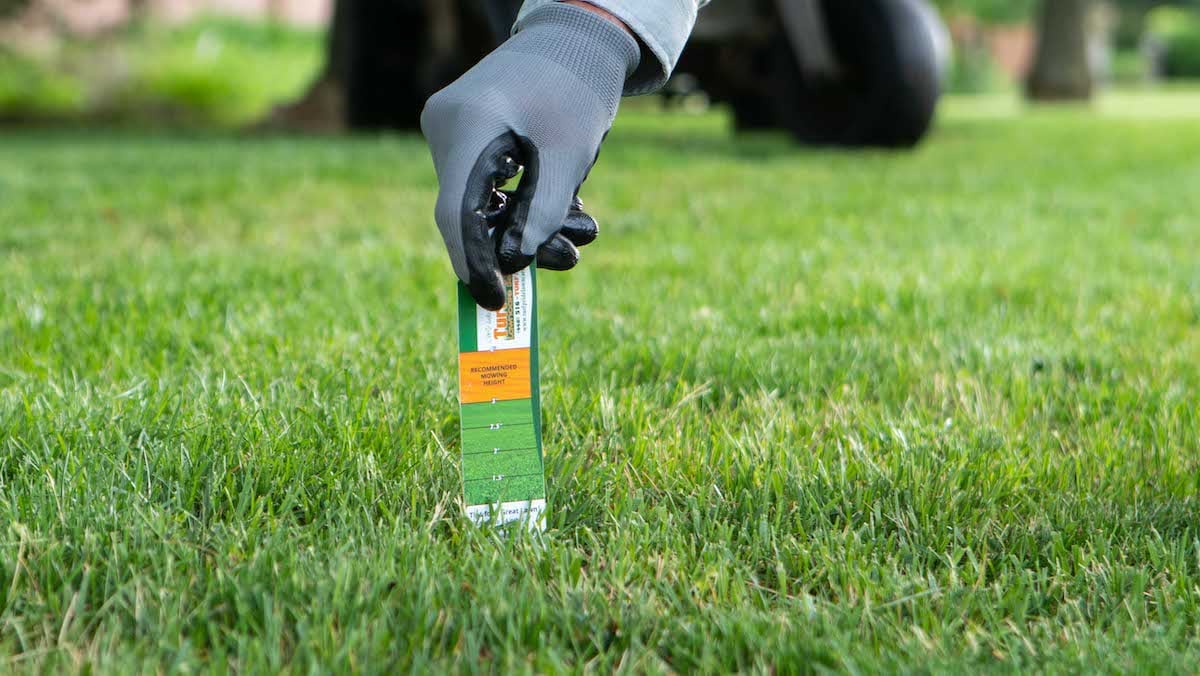
Reasons Why Your Lawn has Different Shades of Green and What You Can Do
How’s your Northeast Ohio lawn looking these days? Do you wish you had thicker, greener grass?
You’re not alone. Everyone wants those luxurious lawns that beg to be walked on with bare feet. You want it. We know it.
Maybe you glance over at your neighbor’s yard thinking the grass is always greener on the other side of the Northeast Ohio fence or property line. Well, you don’t have to worry anymore.
Don’t let a thin, bare lawn get you down. Let’s talk about grass with different shades of green so you can have that greener, thicker grass you want.
6 Common Reasons Your Grass Different Colors
You probably have a vision of a lush, green oasis that is the backdrop to your garden parties and backyard barbecue plans in your Northeast Ohio home landscape.
But those off-color spots you’re seeing don’t live up to what you long for in a lawn.
As you ponder what to do, a big question that comes up is what could be causing the lawn different shades of green. In fact, there are a few possibilities, and we can give you some ideas on how to address these challenges.
/lawn%20tech%20looking%20at%20weeds%20in%20grass.jpg?width=1200&height=675&name=lawn%20tech%20looking%20at%20weeds%20in%20grass.jpg)
1. Lack of Proper Fertilizer
You might think lawns naturally have all the nutrients they need to grow well. But, over time, lawns actually leach nutrients, leaving them deficient. But to prevent grass with different shades of green, your lawn needs the right nutrition.
Enter fertilization. Fertilization can seem overwhelming when you first consider it with all of the options out there, as well as the complex terminology. Fertilizer contains various mixes of nitrogen, phosphorus, and potassium: the three nutrients lawns need to thrive. Then there are liquid and granular fertilizers. On top of that, achieving greener grass requires proper timing and application of the right mix of organic nutrients.
But how do you know what combination of nutrients in what form and at what time of year to deliver them? That’s where a professional lawn care company can help.
/Live%20Website%20Images/technician-riding-fertilizer-2.jpg?width=5168&height=2912&name=technician-riding-fertilizer-2.jpg)
2. Neglecting a Soil Test
A soil test is a crucial step in finding out what nutrients your Northeast Ohio lawn might be lacking and what fertilization and any other treatments can do to improve your grass density and color.
For instance, if your soil’s pH is off, then the fertilizer you’re feeding it might not be working at all. Poor pH could limit nutrient uptake and cause grass with different colors. In Northeast Ohio, lawns tend to lean on the acidic side. Limestone applications can help to correct your soil’s pH and bring it back in a better balance to green it up.
3. Compacted Soil
Water and nutrients need to reach your Northeast Ohio lawn roots in order to prevent a lawn with different shades of green. Over time, lawns can become compact, whether it’s from foot traffic or rainfall, limiting this access of water and nutrients to the roots.
The solution is annual aeration and overseeding. This practice breaks up the soil and enables the lawn to breathe. Also, those small holes aeration creates can provide the perfect access for overseeding in thin, bare areas.
Aeration and overseeding are key elements that shouldn’t be forgotten. And a professional can overseed with the right grass seed mix to ensure even color.

4. Too Much Shade
Occasionally, conditions just aren’t ideal for lawn growth. Maybe the lawn was growing around young trees, but as those trees grew, they created more shade, limiting the sun’s access to your lawn in specific areas. Sun, water, and nutrients are necessary for thick, green grass. Take one of those components away, and you may not accomplish your goal.
Raising or thinning the tree canopy can increase the sunlight to these lawn areas, boosting sun exposure and it’s a key way in how to handle grass with different shades of green.
But maybe thinning the tree canopy isn’t enough. You could have an area where grass just may not grow well. An alternative solution, such as a shade-loving groundcover, mulch, decorative rock, or a hardscape might be a better option than grass in these cases.
/technician%20bare%20spots%20lawn%20looking%20close.jpg?width=1200&height=676&name=technician%20bare%20spots%20lawn%20looking%20close.jpg)
5. Insect or Disease Issues
Proper fertilization can naturally reduce weeds, insects, and diseases. However, these pesky lawn invaders are always lurking, waiting for the opportunity to infiltrate your grass if it shows any signs of weakness.
At times, certain conditions can lead to some weed breakthroughs. An excessively wet season can also result in turf disease. Keeping an eye out for these challenges and managing them quickly can make simple problems disappear versus exacerbate into bigger, more visually unpleasing results like grass with different shades of green.
A lawn care professional can offer solutions such as a combination of pre-emergent and post-emergent weed control tactics to keep all weeds at bay. Nothing blemishes your lawn faster than weeds, insects, and diseases.

6. Watering or Mowing Issues
Mowing is a seemingly simple task that you probably think you can’t get wrong when caring for your Northeast Ohio lawn. But your mowing habits can have a big impact on your lawn’s performance. Mowing improperly can lead to a lawn with different shades of green.
One of the largest mistakes people make is mowing their grass too short, which can put unnecessary stress on your lawn. This can cause a dull green or yellow color, which you don’t want. It can also increase the likelihood for weeds because your lawn becomes thinner. These are all headaches you don’t need.
The goal is to cut no more than one-third of your grass blades at any one time. Ideally you want to mow weekly during summer and you want to mow to a 3- to 4-inch height. Remember to sharpen your mower blades to ensure a clean cut.

Plants also need water, and your lawn is no different. Watering at night can lead to excess humidity, which is a recipe for lawn disease to develop. Watering when the sun is blaring during mid-day means that water may evaporate too quickly before reaching the grass roots. That leaves the ideal watering time to be early morning. This gives the grass roots a chance to absorb the water you’re applying, and as the sun comes out it’ll burn off the excess water resting on grass blades so disease won’t get a chance to develop overnight.
The goal is to water less frequently and long enough that your grass gets a good soaking versus shallow waterings more often. Watering one to two times weekly is a good idea, especially if Mother Nature isn’t already providing enough rainfall. Watering for 45 to 60 minutes is usually enough time for your lawn to get a good soaking. But the warmer and windier the conditions are, the sooner soil will dry out.
Why Is My Grass Different Colors? Turf Pride Can Help!
When you see dark green patches of grass in lawn, you want to get your lawn back to its old self again quickly. The process can take time, and it can be frustrating when your first attempts to tackle your suspected problem don’t work. A discolored lawn is certainly not attractive to come home to.
Let Turf Pride help. You want to find a lawn care service provider you can trust to help you solve your lawn care problems quickly and easily. You certainly don’t want an inexperienced technician to make your problem worse, costing you more money and leaving you with a thinner, ugly lawn. You want to be confident your lawn is in the best hands and looks great, contributing to your property’s overall value.
We’d love to help reduce your stress, thicken your grass, and give you that worry-free lawn you’re longing to spend time enjoying.
/Live%20Website%20Images/lawn-tech-talking-with-couple-pamphlet.jpg?width=1200&height=676&name=lawn-tech-talking-with-couple-pamphlet.jpg)
Ready to learn why Turf Pride could be your choice for lawn care services in Northeast Ohio? We’d love to learn more about you and help you have the best lawn on the block. Get started today with a free quote. Together, we can prepare a customized plan that is perfect for you and your yard.


